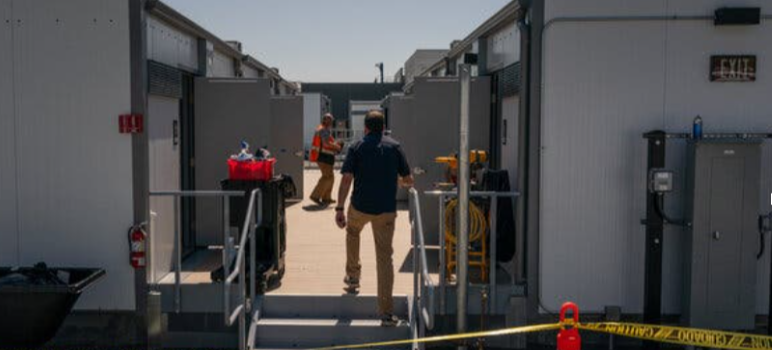Details from the annual Point-in-Time Count census of unsheltered people in San Jose shows what City of San Jose officials say is a “meaningful reduction in unsheltered homelessness for the fourth count in a row.”
The new numbers come as San Jose Mayor Matt Mahan pushes to expand shelter beds and interim solutions with the goal of ending the era of encampments in his city.
The latest count of people in need of shelter shows what the city called “a clear and encouraging trend: San José’s sustained investments in interim housing and other forms of managed shelter are paying off.”
Since 2019, the number of unsheltered residents in San José has dropped by nearly 23%, going from over 5,100 people living outdoors to fewer than 4,000 in 2025, according to the census results announced today by City Hall.
This stands in contrast with statewide and countywide trends, where unsheltered homelessness has continued to rise or remain flat.
“San José has proven that investing in shelter and interim housing works — now it’s time for every city and county to step up and do their fair share,” said Mahan. “Leaving people to suffer in unsafe, unsheltered conditions isn’t compassionate or progressive; it’s neglect. The right thing to do — morally, fiscally, and environmentally — is to bring people indoors immediately, connect them to services, and end the era of encampments once and for all.”
“The city has made significant progress in reducing unsheltered homelessness," said City Manager Jennifer Maguire. “This year, we expect to open additional sites that include Emergency Interim Housing and hotel leases. Providing a diverse set of sites ensures we have dignified options for our unhoused community to come off the streets and into a safe location.”
In the last five years, San José reported it has more than doubled its sheltered population — a 160% increase from 980 people in 2019 to 2,544 today. As a result, the city’s sheltered rate has climbed from just 16% of the total homeless population in 2019 to nearly 40% in 2025, meaning almost four in ten unhoused residents are now living indoors and connected to services.
City officials report that the latest figures mark the highest sheltered rate that San José has achieved in decades, exceeding Santa Clara County’s overall sheltered rate of 30% and California’s statewide rate of 34%. These numbers do not include the additional 1,000-plus beds that San José will bring online by the end of this calendar year.
The city contrasted its numbers with Santa Clara County outside of San José, which has experienced an increase of over 700 people living unsheltered compared to 2019, and its sheltered rate has fallen from 22% in 2019 to 16.5% – less than half of San José’s current sheltered rate.
City Hall claims that the latest numbers “demonstrate that when a city focuses investments on shelter — from quick-build interim housing to safe parking sites — it can save lives and improve the quality of life for everyone.”
“While more work remains to bring every resident indoors permanently, San José is proving that a focus on interim strategies can reduce street homelessness and get people on a path to recovery and self-sufficiency,” according to a press release. “It also proves that in order to truly make a difference statewide, every city and county will need to do its part. It’s simply not enough for big cities to lean in – it must be the responsibility of every community if we are going to end homelessness.
“The longer individuals remain unsheltered, the more their physical and mental health deteriorate, making it even harder to help them stabilize and regain independence.” the city statement read. “Early intervention is critical — getting people off the streets now is the most effective way to break the cycle of chronic homelessness for good.”
Mahan is working with state Senators Catherine Blakespear and Josh Becker on new statewide legislation that would require California counties to fund wraparound services at city-run sites and help other jurisdictions develop concrete plans to reach functional zero, modeled after San José’s approach. The effort has run into roadblocks, as many state leaders emphasize permanent shelter instead of emergency shelter.
Mahan cautioned that this latest unsheltered date is an estimate that is used by the city as “simply one data point to guide efforts to reduce unsheltered homelessness.”
The city Housing Department has been conducting its own counts using multiple data sources collected more frequently, and Mahan said those numbers will be released early next year.
Mahan said the new numbers “provide clear evidence that it is possible to end street encampments in California by prioritizing interim housing.”


By the City’s own non-credible count, there are some 4,000 homeless still on the streets of San Jose every night, more than a decade after the issue arose as a top priority for voters. This is not success, and it’s not even progress. No victory lap is merited by our mayor.
It’s still crazy to me that the City/County pay a lot of money to manage their own system for homeless data (HMIS) and pay millions per year for non-profits to put data in the system – and pay internal staff a lot to run reports/compile data – yet they still rely on the every other year point in time count to measure success. It makes ZERO sense.
The whole point of the point in time count is to remain eligible for federal grants – the whole point of HMIS, which the County/City pay A LOT of money for, is to have real time data on the scope, successes and challenges of homeless intervention programs.
This is not success, and it’s not even progress.